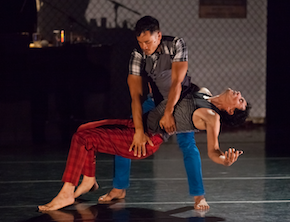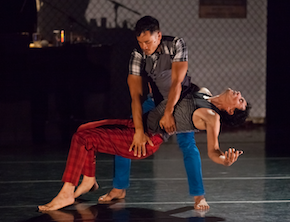
Photos by Margo Moritz
As a live-streamed show presented Sunday afternoon by Z Space, the Joe Goode Performance Group’s newest dance/theater work, Hush, looked and sounded fine. Broadcast in conjunction with the startup company 2nd Line TV (www.2ndline.tv), the show, Goode cautioned last week, was experimental, but well worth trying.
“I teach at UC Berkeley, and my students are so computer-literate, if not obsessed. They watch live-stream, they do online chatting constantly,” he said. “Their lives are so ‘media-ted,’ that it seems a gross omission only to be doing something in real time.”
Visitors to the Hush website were invited to watch online if they couldn’t make it to the theater; they were taken to a page where they made a pay-what-you-wish donation via credit card. The suggested donation was $10, to be shared between 2nd Line and the dance company. According to the website, 140 people watched the live stream; Z Space was sold-out.
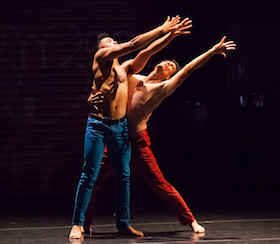
And so, seen and heard on an iMac laptop from a living room sofa in Silicon Valley, there was Hush. You could hear the ushers talking with members of the audience as they were shown to their seats, while Motown played in the background. When the theater darkened and the stage lights went on, the entire thing felt as natural as if it were being viewed from a seat in the theater.
There were a few glitches; once, pixilation; three times, minor audio delay. Nothing you might not experience while watching cable TV. The stage and the dancers were viewable in their entirety, as if seen from a good theater seat; no close-ups, but no sawed-off feet —the video watcher’s dance bugaboo — either.
Could this take the place of live audiences for live performances? Well, the parking’s easier. In all seriousness, though, this feels like wait-and-see. There are multitudinous esthetic, cultural and economic considerations in our shifting universe of arts and technology.
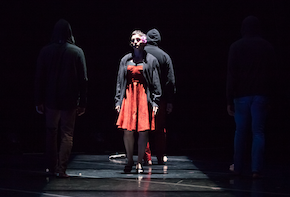
If you’re accustomed to live performance, this isn’t that. But if you’re used to watching dance on a screen, it looks impressive indeed. This was a one-time broadcast, by the way; the live Hush repeats nightly at Z Space through Saturday.
Hush, for six dancers, unites a score by Ben Juodvalkis and sound effects, likened to Foley effects for movies, by Sudhu Tewari. Drawn from stories told by Joe Goode’s audiences and community, Hush has six interlocking tales about silence and disclosure, and what it means for self-expression and empowerment. The dancers also sing, speak, and act.
The story: Penny (Damara Vita Ganley) is raped. She doesn’t want to think about it or discuss it, not even with her boy friend. Her best friend, Bert (Melecio Estrella), is gay but a virgin, and he doesn’t want to confront that aspect of his life. How the two of them come to grips with their dilemmas constitutes the story. The refrains in the songs, by turns sweet and bitter, speak to societal pressures and the ones they inflict on themselves.
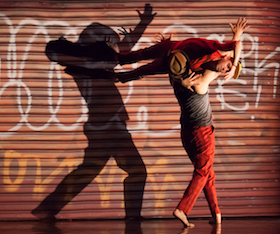
The narrative’s triumphal resolution, too, feels a bit too easily arrived at, but the ensemble work is assertive, powerful and embodies a sense of newfound freedom. The other wonderful dancers were Felipe Barrueto-Cabello, Andrew Ward, Jessica Swanson, and Alexander Zendzian.

